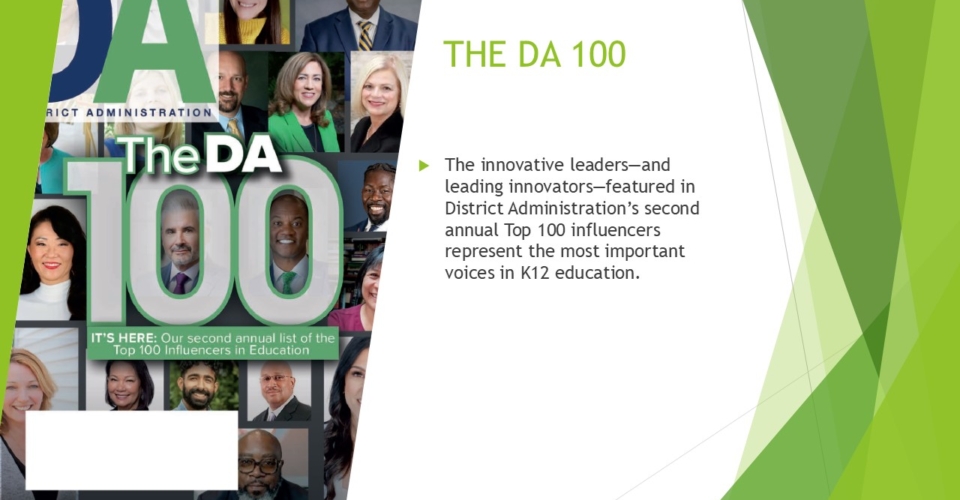School facilities rely on funding from federal, state and local governments, among other entities, to round out their budgets. In fact, nearly 14% of public education funding comes from the federal government but President Donald Trump’s recent Department of Education executive order and other federal funding freezes put this funding at risk.
School infrastructure projects are essential for students’ safety and well-being, as studies show their performance improves based on their physical comfort in the classroom. Unfortunately, data from the recently released 2025 ASCE Report Card on America’s Infrastructure found that only 10% of school funding in the 2021-2022 school year was directed towards facilities, and a recent study from the University of Albany found that HVAC improvements directly improve student outcomes.
As schools navigate federal funding uncertainty and what the dismantling of the Department of Education means, school facilities leaders must not operate out of fear, but instead, take a proactive approach to prioritize where money is spent and prepare for all possible funding scenarios.
Prioritizing school infrastructure needs
Public school budgets are historically stretched thin. To make the most of available funds, schools must decide where to apply funds to stretch the capital in the short and long term. As school leaders and business officers try to do more with less, they’re also tasked with demonstrating fiscal responsibility and transparency.
Data and technology are critical for school leaders to make accountable asset management and capital planning decisions. This starts by understanding each asset—its age and the data of last maintenance—that provides insight into overall infrastructure health. With this information, leaders can better decide where to allocate funds and when repairs or replacements need to be made.
Applying data to these decisions can support leaders in communicating funding decisions to the public and increase community confidence in asset and facility decisions as three in four respondents in a recent survey believe their local schools struggle with budget constraints.
Embracing preventative maintenance
A critical threat to school infrastructure health is the “band-aid” approach, or only fixing assets when they break down. Instead, regularly scheduled, proactive maintenance can keep assets in good shape, extend their useful life and ultimately save districts money in the long run.
True asset lifecycle management requires facilities professionals to understand maintenance activity thoroughly to transition from a reactive to a proactive maintenance program.
Anecdotally, schools don’t put enough budget into proactive maintenance as these funds are often invisible to stakeholders. For example, while 77% of respondents in a recent survey say they notice the state of their local public school’s infrastructure, HVAC system upgrades are much less visible than repairs to the gymnasium floor.
More from DA: See which experienced K12 leaders are on the move
Stakeholders tend to prioritize visible projects but when fundamental assets don’t operate, like a leaking roof, it can disrupt student learning. Investing in proactive maintenance, even if less visible, is crucial to maintaining the overall health of school infrastructure.
Public schools that utilize capital planning can show stakeholders the importance of upgrading “invisible assets” through data.
The Frederick County Public Schools in Maryland utilized capital planning tools to highlight the schools’ funding needs and asset maintenance priorities. This allowed the district to predict the most necessary asset updates and repairs and transition to a 75% preventative maintenance focus that extended the lives of their assets.
Similarly, Baltimore City Public Schools leveraged capital planning to highlight what the district needed to create a proper preventive maintenance budget and what would happen if the schools did not address the infrastructure needs. Although this data showed the dire situation Baltimore schools were in—the district needed $120 million more in funding for its preventive maintenance to be up to industry standard—it provided tangible evidence that brought awareness to the state of the schools’ assets and its funding needs.
Getting creative with funding
While schools can still rely on local and state funding, they must get creative to make up for what could be lost with a federal funding freeze. For example, public school leaders can explore pursuing private partnerships with vendors or contractors for additional funds.
In another example, schools can generate additional revenue by renting out their facilities to the community. Event management software can help schools easily manage facility rental operations, making it convenient for schools to supplement their budgets.
Alternatively, schools must focus on securing local government funding and actively engage in all state-level decisions. By participating in the policymaking process, schools can effectively advocate for the funding they need to maintain their infrastructure and operations to navigate changes in federal education budgets.
As public schools and their leadership navigate uncertainty about federal funding, leaders must create a strategic, proactive budget that prioritizes preventative maintenance and outlines where to spend current funds in the short and long term.
True asset lifecycle management will require a predictive, proactive approach to unlock funding and apply it strategically to improve school infrastructure health.



